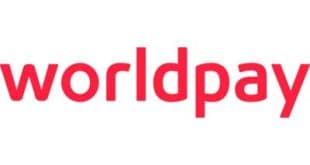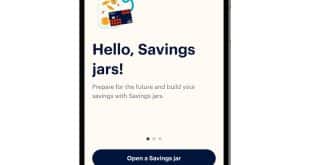Why Prepaid Cards Need Marketing TLC
Regulation, public ignorance about prepaid cards, and negative publicity worry prepaid card executives, according to a recent survey.
Researchers from Boston-based Aite Group LLC polled 24 senior executives during March’s Prepaid Expo USA conference in Orlando, Fla., and asked them to rate their concerns about 10 issues on a scale of 1 to 5, with 1 for not at all important to 5 for very important. Regulatory pressures scored at the top with 4.6.
That’s not a surprise considering all the new or proposed regulations on prepaid cards, including the Dodd-Frank Act and its Durbin Amendment. While exempting general-purpose reloadable (GPR) prepaid cards and government prepaid cards from debit card interchange controls, the law nonetheless has spurred fears that the effects of regulation could spill over into the unregulated sector.
Another new force is the CARD Act of 2009 that put controls on gift card fees. Then there is a proposal from U.S. Sen. Robert Menendez, D-N.J., which would add still more regulations, and more state regulation.
Almost as bad is what prepaid card executives perceive as the diffuse image of their industry and products, which Aite terms “market awareness.” That problem scored 4.0 to rank No. 2 on the list of “challenges,” as Aite termed it.
People know what credit and debit cards are, but they’re not very clear about prepaid cards, according to Aite analyst Adil Moussa. That’s especially true for GPR cards, one of the industry’s fastest-growing niches.
“Market awareness is something that still surprises me because I don’t think any player has really found a way to stand out,” Moussa says. “There is not one word that can describe it well.”
The term “GPR,” he adds, needs a catchy phrase that will create a strong image in peoples’ minds. “GPR doesn’t do it; it’s not a brand. I think people need a brand.”
And when the public does think of prepaid cards, it’s often negatively after a media or consumer-group report criticizes the cards’ fees. Advocacy groups and the media scored a 3.6 to rank third on the list of challenges.
Aite’s report cited the debacle of the Kardashian Kard, a high-fee card bearing the name of reality TV’s Kardashian sisters and aimed at teens and young adults, as an example of an incident that could add to negative perceptions that all prepaid cards carry very high fees (“Don’t Give Up on Teen Cards”).
The other seven challenges and their rankings were lack of scale, 3.2; the limited number of partners or distributors that could add scale to card portfolios, lack of product innovation, competitive pressures, and lack of processing system flexibility, all 2.8; lack of processing system reliability, 2.7, and other technology issues, 2.6.
Despite their worries, executives see considerable upside for many of their products. Asked to rate growth prospects for nine prepaid categories, the respondents gave top billing to GPR cards for unbanked and underbanked consumers.
Aite also asked some “peer review” questions. Asked how impressed they were by the strategies of 11 reload networks on a scale of 1 (not at all impressed) to 5 (very impressed), respondents gave their best marks to Green Dot at 3.8, followed by NetSpend, 3.2; Visa, 3.1, and Western Union, 3.0.
Next came MoneyGram, 2.8; InComm and MasterCard, both 2.7; Blackhawk Network, 2.5; i2c and First Data, both 2.1, and Discover, 2.0. Green Dot and NetSpend also scored well above the pack for strategy and execution by program managers.
Asked how they would rate the four major card networks’ prepaid card execution and strategy on the same scale, respondents gave Visa a 3.7; MasterCard, 3.3; American Express, 2.6, and Discover, 2.3. Among 16 processors, respondents gave top marks to TxVia, 3.5, with NetSpend close behind at 3.4.
And asked to name one to three prepaid card-issuing banks that have shown effective strategy and execution in the past year, 52% of votes went to The Bancorp Bank, far more than any other issuer. Next were MetaBank, BB&T, Citibank, and H&R Block, each garnering 7% of responses.
Moussa says The Bancorp Bank has operated conservatively and avoided the micro-lending problems that got rival MetaBank into regulatory trouble, but still “hooked up with some significant players” and showed innovation with such products as cards for insurance disbursements.
A High-Caffeine Jolt for Mobile Payments
It’s early days yet, but guess who’s running the biggest mobile-payments deployment in the country right now? Chase? BofA? Try again. It’s Starbucks Coffee Co.
Late in March, the typically tightlipped coffee chain revealed that more than 3 million transactions have taken place on its smart-phone-based prepaid payments system, which became available in all U.S. company-owned stores only in January.
Seattle-based Starbucks’s announcement is significant not only because usage numbers in mobile payments are hard to come by, but also because it indicates a readiness by consumers to embrace something other than conventional mag-striped payment cards.
“What it proves is that consumers are ready for better payment technology to do transactions,” says Steve Mott, principal at payments consultancy BetterBuyDesign, Stamford, Conn. Starbucks would not comment for this story.
While much of the payments industry’s attention has been riveted on developments in near-field communication technology (NFC), which allows handsets to make contactless transactions at the point of sale with e-wallets embedded in the phones, Starbucks’s system depends on so-called 2-D bar codes. This technology, which lets users scan bar codes with their phones to complete transactions, is often seen as an alternative to NFC, which depends on radio-frequency technology.
But Mott argues Starbucks’s early success may spur other merchants to support both NFC and 2-D bar-code technology. “Either/or misses the point,” he says, citing consumers’ willingness to try out new payment forms. “I would imagine there are merchants who would like to support both.”
Still, Starbucks may be a unique case. Drew Sievers, chief executive of Larkspur, Calif.-based mFoundry Inc., whose mobile technology lies behind the Starbucks project, says the coffee emporium stands nearly alone among U.S. merchants in its ability to control its point of sale and its consumer accounts, its customers’ loyalty, its independence from card-network dictates in its closed-loop prepaid system, and its high share of smart-phone-using customers (more than one-third, Starbucks says).
That doesn’t mean, though, that mFoundry hasn’t heard from other retailers. “We’re going to do other stuff with them, and other stuff with Starbucks,” he promises. “It’ll be mobile something, [though] it doesn’t have to be payments.”
In January, Starbucks engineered the largest U.S. chainwide expansion yet seen in mobile payments by extending what had been a pilot for its Starbucks Card Mobile App to almost 6,800 stores. The move increased the number of Starbucks locations accepting mobile payments from more than 1,300 to more than 8,100, including more than 1,000 participating locations inside Target Corp. stores.
How many customers are using the mobile system is a harder number to come by. The system lets customers tap their Starbucks Card prepaid accounts, and while the company does not release specific numbers for the card, it said in January it is held by “several million” customers. These customers loaded more than $1.5 billion on their cards last year, up 21% from 2009, and more than 20% of Starbucks transactions are now conducted with the card, the chain says.
Available free of charge for Apple iPhone and BlackBerry model smart phones, the Starbucks app works by displaying bar codes on customers’ phone screens. Customers pay by holding their phones next to a countertop scanner. The app also lets customers find nearby stores, check their accounts, and reload them with a credit card or from a PayPal account.
The pilot started in September 2009 in a handful of West Coast stores, expanded to the Target locations the following April, and then expanded again, this time to some 300 standalone stores in and around New York City, in October.
Slow Times for Same-Day ACH
Hoping to speed up transactions on the automated clearing house to make the network a more competitive proposition for the age of e-commerce and mobile payments, the Federal Reserve introduced same-day settlement, shaving a day off the usual time it takes for ACH transfers to settle.
That was more than eight months ago. So far, the FedACH SameDay service has attracted only a handful of banks. “It’s been a long struggle,” laments Steven Cordray, retail payments project manager at the Atlanta Fed’s Retail Payments Office, in a conversation with Digital Transactions News, this magazine’s sister publication.
Speaking last month at Payments 2011, a conference sponsored by NACHA, the regulator for the ACH, Cordray revealed that banks representing just 30 routing numbers have signed up as originators, receivers, or both. “The adoption rate has been minimal so far,” Cordray told a standing-room-only crowd of bankers. As if to underscore his point, he added that “volumes are minimal, participation has been anemic.”
Meanwhile, businesses have a “healthy skepticism” about the service, even though in general they favor same-day settlement because it speeds up funds availability and generates faster results on return items, says David T. Bellinger, director for payments at the Bethesda, Md.-based Association for Financial Professionals, which represents corporate payments executives.
That skepticism, Bellinger says, stems from the fact that FedACH SameDay is voluntary for banks and applies only to certain ACH debits, such as check-based conversions and Internet and telephone-initiated entries. “It’s not going to get broad adoption until it’s mandated,” he says. Bellinger appeared at the conference on the same panel as Cordray.
Moreover, the service handles only Fed-processed transactions. While the Fed processes 57% of all ACH traffic, it is only one of two network switches. The other one, The Clearing House Payments Co. LLC, has not introduced a like service.
Observers have faulted the Fed service since it started for excluding ACH credits, which businesses would like to see added, and for its opt-in approach, which leaves merchants uncertain whether receiving banks are participating and makes it harder for originating banks to sell businesses on using the service.
Cordray also blames low interest rates for the service’s lack of appeal so far. With low rates, banks and merchants have less to gain from having cash show up a day sooner. And even banks that want to opt in have been slowed by third-party software that needs to be updated for faster settlement, he says. The one-day speed-up represents the first major change in ACH settlement windows in 37 years.
The exclusion of credits, which allow payors to push payments electronically from their accounts to payees’ accounts, has often been blamed on banks’ fear that same-day clearing could allow the relatively cheap ACH to threaten their lucrative wire-transfer business.
But Gareth Lodge, a U.K. payments analyst, told conference attendees a British version of FedACH SameDay, known as Faster Payments Service, has had no impact on wire transfers since its launch in May 2008. Indeed, adjusting for a collapse in the housing market, the U.K. wire business has actually grown, he said.
That adjustment is important because wire transfers are typically used for large-value payments, such as down payments on homes, rather than for small-value bill payments and retail transactions, he pointed out.
The Fed service’s weak start could ultimately hurt banks. Bellinger warned the audience that businesses’ interest in faster settlement could lead them to work with non-bank players to reach endpoints they can’t reach through FedACH SameDay. Banks would still play a necessary role in processing payments, but they would collect a smaller share of fees, he said.
He urged banks still on the sidelines to start participating. “We want to press you to take advantage of same-day ACH because it’s in your best interest,” he told the crowd.
But a mandate to push all banks into participating in same-day settlement may be some time in coming. While Jan Estep, NACHA’s president and chief executive, said in a keynote address at the conference that “it is hard to imagine a future without changing our processing and settlement windows,” NACHA is in the information-gathering stage of an investigation of the issue, she said in a statement.
POS Cash Back Has Become the New ATM
U.S. debit card holders received $35.2 billion in cash back on just over 1 billion point-of-sale purchases in 2009, according to new figures from the Federal Reserve. The popularity of cash back at the checkout counter, which usually is free, helps to explain why ATM operators are struggling to keep transaction volumes up.
The Fed released overall results from its latest triennial payments study in December but disclosed more than 65 pages of detailed new data last month at the NACHA Payments 2011 conference in Austin, Texas.
The study, based on data from more than 1,000 financial institutions along with information from 65 of the largest payment networks and card issuers, found that debit cards are now by far the most popular form of electronic payment. The Fed, which asked respondents for data for 2007 to 2009, says POS debit transactions, both of the signature and PIN variety, grew at a compounded annual rate of 14.8% in the study period.
PIN debit, which accounts for the vast majority of cash-back transactions, grew at a compounded annual rate of 15.6% in the study period to 14.5 billion transactions in 2009. Signature debit transactions totaled 23.4 billion in 2009 and grew at a compounded annual rate of 14.3%.
About one in 38 total debit transactions included cash back. The average-cash amount in 2009 was $34 per transaction. Holders of debit cards from commercial banks accounted for 77% of cash-back transactions, with 16% and 7% coming from credit-union and savings-bank cardholders, respectively.
But credit-union cardholders took out much more cash per transaction on average than did holders of cards from commercial and savings banks: $42 versus $33 and $30, respectively.
One reason for that, according to Richard Oliver, executive vice president at the Federal Reserve Bank of Atlanta, is that credit unions have fewer branches than do banks, and credit-union members want to avoid fees for using other financial institutions’ ATMs. Only 45% of credit-union account holders’ ATM withdrawals are “on-us” transactions, or those on machines owned by a customer’s financial institution.
“Faced with fewer low-cost options to access cash, some credit unions’ members may use debit cash back at the point of sale as a primary source of cash,” the Fed’s report says.
The 2010 report has more data about POS cash back than the 2007 triennial study, which estimated cardholders withdrew $32.4 billion in 2006. That means the value withdrawn increased a total of 8.6% by 2009.
The Fed says ATM withdrawal transactions, estimated at 6 billion in 2009, increased at a 0.9% annual rate in the study period, and the total amount withdrawn increased at an annual rate of 3.8% to $647.6 billion in 2009. The average financial-institution withdrawal grew at a 2.9% compounded annual rate to $108 in 2009.
Americans made an estimated 3.8 billion on-us transactions in 2009, up 1.8% annually during the study period and accounting for 64% of all ATM withdrawals. They made 2.1 billion foreign ATM withdrawals in 2009, or transactions at ATMs not owned by their bank or credit union.
Consumers frequently get hit with fees on such transactions: foreign fees charged by their own financial institution, and surcharges assessed by the ATM owner. Thus, it’s no surprise that foreign ATM withdrawals decreased at an annual rate of 1.8%.
More study highlights:
– Contactless card transactions “remain extremely rare,” according to Oliver. The Fed estimated their 2009 transaction volume at 30 million on signature-debit cards and 20 million on credit cards for about 50 million in all. The average signature-debit card contactless purchase was $20, but 47% of transactions were for less than $15 and 15% were for less than $5.
The average credit card contactless purchase was $43, with sales of less than $5 accounting for nearly 11% of transactions. Purchases of less than $25 accounted for 44% of transactions.
– The Fed estimates the number of remotely created checks (RCCs) increased from about 495 million in 2006 to 575 million in 2009. “That struck me as a really big number,” Oliver said at a Payments 2011 session. At the same time, RCCs increased their share of checks written from 1.5% to 2.1%.
Remotely created checks are a legal form of demand draft, but they’re controversial because a business can issue them without the customer’s signature after obtaining account and bank-routing numbers from a consumer over the phone. Telemarketing boiler rooms have used RCCs to perpetrate fraud.






